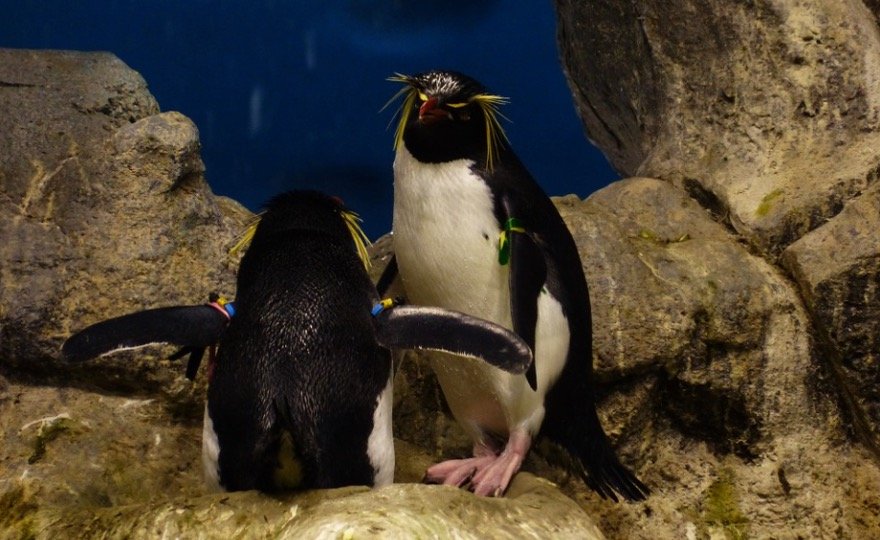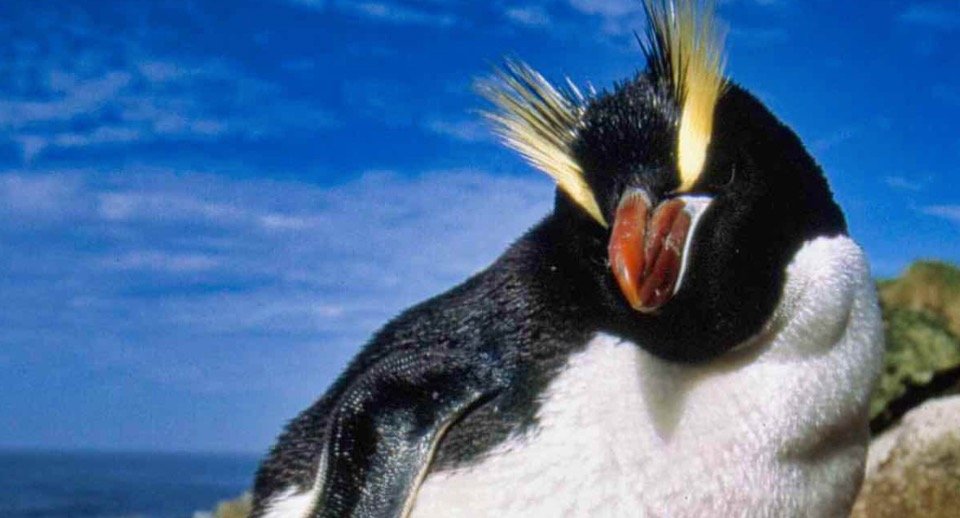Crested Penguin: Description, Types, Pictures, & Fun Facts

Table of Contents
Scientific Classification of Crested Penguin
- Kingdom: Animalia
- Phylum: Chordata
- Class: Aves
- Order: Sphenisciformes
- Family: Spheniscidae
- Genus: Eudyptes
- Scientific name: Eudyptes robustus
Location of Crested Penguin
- Ocean
- Oceania
Crested Penguin Description
The crested Penguin belongs to family Spheniscidae. The bird is native to an island named Snare Island, which is located in the watery areas off of Antarctic island. The birds feed on krills and other tasties.
The bird is classified into six different species and the crested penguin is one of them. The color of the bird varies from grey, yellow, black, and white.
Incredible Facts About Crested Penguin!
• Krills, young squid, and other small animals living in the water are consumed by the crested penguin.
• The birds can be found in only one island located near New Zealand.
• Typically, the bird reproduce once in a year and produce only one chick.
• The predators of a crested penguin include orcas, leopard seals and a variety of birds.
• In some places including Antwerp and Paradisio, the crested penguin live freely in zoos.
Other Species of Crested Penguin
Eudyptes robustus is the scientific name of the crested penguin. The scientific name of the bird is derived from a Greek word that means ‘good diver’. The species name robustus is named over the strong and robust manner and living behaviour of a penguin.
The birds are hardy and highly adaptive thus they can easily survive in all kinds of environments on their own. The birds raise their chicks by pairing together.

Appearance and Behavior of Crested Penguin
The size of the crested penguin in around medium-sized. The birds has eyebrows running from both of its eyes towards back to the rear of its head and the color of one eyebrow is bright yellow. The coloration is almost similar in both males and females.
However, the appearance of both the sexes is much similar but the size of male crested penguin is relatively larger than the female penguin. Both male and female birds consist bright red colored eyes but the color of eyes is slightly different from the eyes of the rock jumper penguin.
The young birds are comparatively less dominating than the adults and they have short crest with chin of pale color. The white colored stripes are present on the cheeks with stripes of white-pink color around their beak. The stripes can be seen in juveniles as well as adults.
Behavior of Crested Penguin
However, the behaviour of a crested penguin is quite peaceful and they are not seems to be aggressive but every year, they are spotted while fighting due to the need for a new mate. The fight occur because both young and old penguins find new mates for themselves.
The birds fight with other bird and grab it by the neck then use wings to beat the grabbing bird. The bird have the ability to made several vocalizations. Their sounds varies from hissing to explosive cries and rhythmical trumpeting, braying sounds.
When they travel at sea, the sounds carry for a long distance. However, despite their variety of vocalizations, the birds remain very peaceful for most of the time and also remain well-behaved. They are very peaceful organisms that settle down immediately after their fight over and not look for a fight again.
Habitat of Crested Penguin
The habitat of the bird include sea and land. Their habitat depends upon the season of the place where they were living. However, it is not much known about their non-breeding habitats or where they live during this period but the birds are spotted on the land in some places including Tasmania, New Zealand, etc.
The birds prefer to live in dense colonies on coastal rocks and live under tree canopies of the Olearia forests. There, shallow holes were digged by penguins and place grass, twigs, leaves, pebbles, and peat in the bottom of the holes.
The raise the level of nest above the ground and use a rim of mud for doing this. At the time, when they move to their new nesting sites, they will die due to the activities of nesting once they have moved in the vegetation.
Some colonies live near a water stream and get advantage of this by getting water for drinking and bathing. But unfortunately not all the colonies are located near the streams.
Diet of Crested Penguin
There is not much information available about the diet of crested penguin but scientist assume that the diet of a crested penguin include krill, squid and small fish.
It is still unknown that how the birds catch their prey and what is hunting strategy of crested penguin. But it seems that the birds catch their prey by flying over the ocean. They are not spotted while eating other food items yet.
Predators and Threats of Crested Penguin
Various large hunters including orcas, sharks, and leopard seals prey upon the penguin species. The juvenile penguins and eggs also face threat of predation from petrels and skuas.
However, human do not pose any threat for the crested penguins and not any other predator prey upon the birds. The government of New Zealand is doing efforts to protect the species and also the keep them healthy.
Reproduction, Babies, and Lifespan of Crested Penguin
The crested penguin reach sexual maturity at the age of five to nine years. The breeding season of the species starts from early September and continuous to January. The male tries to attract the female for mating by standing on their hind feet and flapping their wings.
Generally, the birds mate for life and considered as monogamous birds that spend their life with a partner after finding a reliable partner. Every year, the pairs meet at their breeding grounds and they remain faithful for each other after meeting each other for rest of their life.
The penguins prefer the existing burrows in the rocks to build their nests and use various soft materials to decorate their nest. The female bird lays eggs in the nest after one to three weeks after breeding.
The female bird lay first egg relatively smaller than the second egg and it also have less chances for hatching and if it hatches, it is not likely to survive. The female lay two eggs and incubation of eggs done by both the parents alternatively for first 10 days.
After these days, the male leaves the nest and go to forage for food and sometime, the female bird forage for food and male incubate the eggs. After the eggs hatched, they are guarded by the male, who sits on the eggs for the three weeks.
During this time, female penguin goes out in search of food for the chick and male protects the chick from all predators and intruders. Thus both parents are involved in feeding and guarding the chick and they introduce the chick into water after 11 weeks and let to make it on his own.
The lifespan of a crested penguin is 15 to 20 years. The bird become able to breed when it reaches the age of five to nine years.
Population of Crested Penguin
It is estimated that the population of crested penguin is about 25,000 pairs. It seems that their population is growing slightly or at least holding steady at that number. However, their population can be dropped easily to nothing if a plague or any other event affect them thus the crested penguin is listed as vulnerable by IUCN red list for threatened species.
The rising of dropping of the population of penguins at this point depends upon the fact that how the birds fare over next few years. Introduction of several new predators, increasing temperature of water are some factors, which can be considered as a potential threat for these birds.
Thus, action are taken by the government of New Zealand to protect the crested penguins by protecting the marine feeding grounds, habitats such as Snares Islands.









